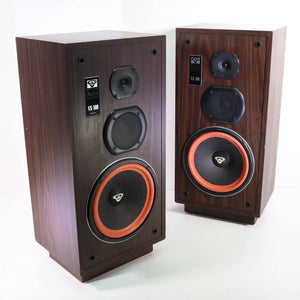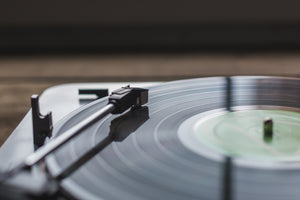We are unable to reply to comments, so please message us directly if you have a specific question regarding products, shipping costs, etc. Our office number is (480) 207-1511. Our email is hello@spencertified.com. You can also message us on Facebook. Commonly asked questions and answers can be found on our FAQs page here.

WHAT IS A DAC? DO YOU NEED ONE?
A RUNDOWN OF DIGITAL-TO-ANALOG CONVERTERS
A DAC is an essential part of a modern audio setup. So essential, in fact, that you probably already use one every day. Your smartphone and computer have DAC chips, for example. If you have a home theater receiver, it most likely has a built-in DAC too. Components like CD players almost always have an internal DAC as well.
However, when you hear someone mention the term “DAC,” they’re typically referring to the external ones you can purchase. There are some incredible ones out there that can give your audio a real boost. But are they necessary?
Let’s find out!
WHAT IS A DAC?

Let’s start by breaking down what a DAC is exactly. A DAC, or “digital-to-analog converter,” converts digital signals into analog ones. This is necessary because you can’t hear digital signals - digital, after all, is a series of binary 1s and 0s. The digital media format (and here we’re referring to media such as CDs, DVDs, and smartphones) is amazing for storing those broken-down increments (or samples) of audio into neat, compact packages. But there does need to be a translator involved to translate those 1s and 0s into a signal that an electric speaker can interpret. A DAC is that translator.
Now, there are physical media formats out there that don’t need a translator. This would be your analog media (such as vinyl and VHS tapes). Since it’s a continuous signal, you’re starting with an analog audio signal and ending with an analog audio signal, so you don’t need that go-between. However, unless you’re a pure vinyl enthusiast, you’re likely to still need that DAC for the digital side of music.
HOW DOES A DAC WORK?

The way a DAC works is surprisingly simple. First, the digital audio signals leave your source device; second, they travel into the DAC; third, they’re turned into analog audio signals; fourth, the analog signals pass through the analog output into your headphones or amplifier. And thus, the sharp start-and-stop edges of the digital signals are magically transformed into the smooth, curving forms of analog signals! A transformation so complete that the carriage won’t turn back into a pumpkin even after midnight.
But if you want to forgo the magic for the technical, what is actually happening is that the DAC takes miniscule samples of the digital signals, then sews them together into an analog waveform. The number of samples it reads from an audio file per second is referred to as the sample rate. Most DACs these days support up to 24-bit/96kHz at minimum (the first number, 24, is the bit depth, which is how much information the file has). But the highest-resolution files can be as high as 24-bit/192kHz, so if that’s the hi-res audio you’re dealing with, getting a DAC to match is important.
So after it takes those thousands of samples, the DAC plots them all on a graph, creating that curved analog wave. Ideally, the DAC will follow a consistent timing sequence when creating that graph, which is done using a “master clock” that is precisely tuned to the sample rate. Sometimes, however, clocking errors can occur when the individual samples aren’t being converted at consistent times, which makes the sound minutely distorted during playback. These aren’t typically noticeable, and quality DACs don’t often have clocking errors, but it’s worth noting.
TYPES OF DACS
Not all DACs are built the same. As mentioned above, some DAC chips have higher bit depths and sampling rates. Some can handle high-res audio formats like DSD or MQA (Master Quality Authenticated), while others can’t. You’ve also got the “external” DACs, the ones that are their own components. These come in different types depending on the application they’re meant for.
There are portable DACs that have amplifiers already built in, which make a useful all-in-one solution for headphones or IEMs. They can fit in your pocket and often come with Bluetooth capability, allowing you to forgo that extra cable connection between your headphones and your phone or laptop. There are also DAC dongles, which are a great solution to getting hi-res audio on the go. But if you’re needing to power harder-to-drive headphones or something for your PC setup, there are desktop USB DACs available too.
There are also straight DACs without a built-in amplifier, perfect for audiophiles who love to tinker with different DAC and amp combinations to customize their setup. And even DACs with amps will often have the capability for the amplifier section to be bypassed so it can be used as a pure DAC. DACs also come in a variety of shapes and sizes, feature different digital inputs and analog outputs, and differ between having built-in batteries and relying on the source’s device for power.
DO YOU NEED AN EXTERNAL DAC?
In most cases, your sound system already has a quality DAC built in. And while you could add an external DAC to your audio/video receiver, that’s typically overkill. However, it becomes a completely different question when you’re debating about one for your PC desktop setup or your smartphone. In other words, when your current DAC is a tiny built-in chip that was more of an afterthought than anything else.
Dedicated DACs reduce clocking errors, resulting in sonic benefits like an extended soundstage and improved imaging. It doesn’t improve the music itself, it just makes the details more noticeable to the listener. So it can be handy to invest in something like a USB DAC that can connect to the USB port of your laptop (and to your phone through a USB adaptor) or a DAC with a built-in headphone amplifier to drive your headphones. But it’s not worth it for everyone. Some people can’t hear those differences; some are just casual music listeners who don’t want to spend that extra money for an external DAC.
It’s like a pair of shoes. You can get a decent pair for thirty bucks, and they’ll get you where you need to go. But if you’re a runner, or you’re on your feet all the time, you’re probably willing to invest decent money to get a more expensive pair that will offer better support and comfort. Is the upgrade necessary for everyone? No, of course not. Many people don’t care about what shoes they wear, or they simply don’t know the different types and brands out there well enough to bother with spending more on them. But if you do? Spending that extra to invest in a solid pair is typically worth it.
SUMMARY
It all comes down to choosing the right DAC for your audio system. If you're like most home theater lovers, the DAC inside your receiver is just what you need to get the best from your music and movies. And if you're the average music listener, you're probably happy with the internal DAC of your phone or laptop.
Though with that said, if you do appreciate the finer points music has to offer, you can bypass that DAC by connecting to an external DAC with better components. DACs have a lot to offer, and they vary greatly in price and features. If you've got passive speakers, decent headphones, or a neat PC setup, trying out a DAC is worth a shot.
Thanks for reading! Have a great day.





Leave a comment